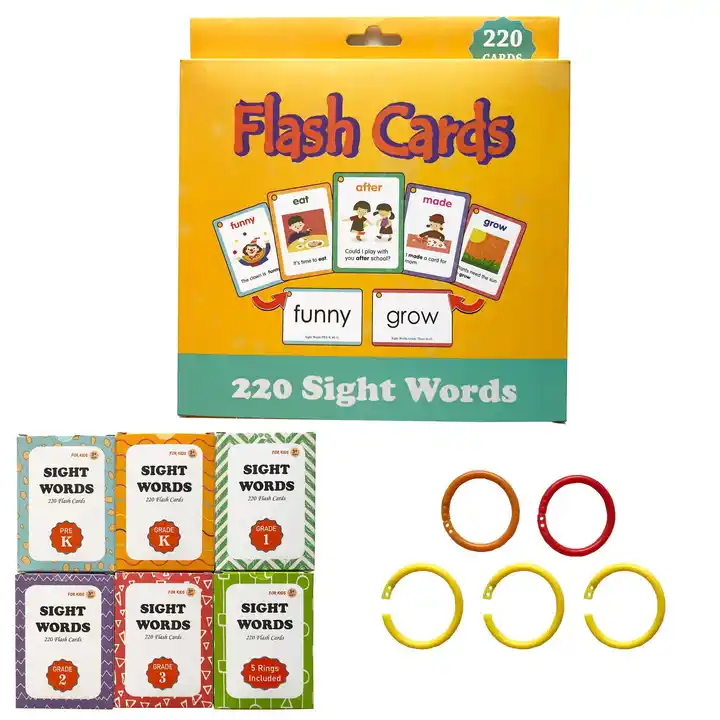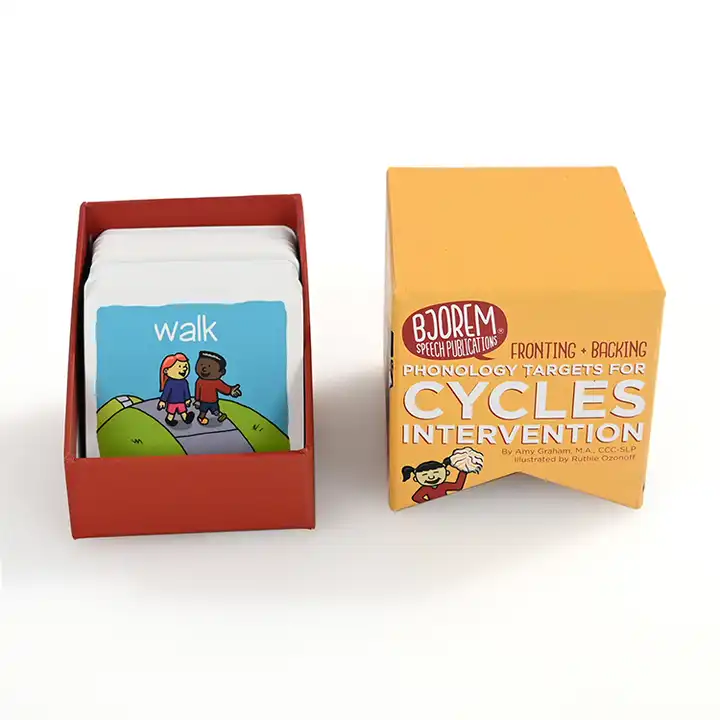Content Menu
● Introduction
● Overview of Printable Alphabet Flash Cards
● Key Advantages of Printable Cards
● XingKun Custom Products: Enhancing Alphabet Flash Cards
● Practical Use Cases and Activities
● Best Practices for Maximizing Effectiveness
● Quality Assurance and Customization with XingKun
● Implementation Plan for Schools or Tutoring Programs
● Limitations and Considerations
● Future Enhancements
● Sample Visual Concepts (Non-brand Specific)
● Common Pitfalls to Avoid
● Conclusion
● Q&A Section
>> 1.What makes printable alphabet flash cards effective for beginners?
>> 2.How can customization enhance learning outcomes?
>> 3.Are printable cards durable enough for daily classroom use?
>> 4.How should letters and images be arranged on the cards?
>> 5.Can these cards support learners who are not native English speakers?
Introduction
Alphabet flash cards printable have become a staple resource for parents, teachers, and tutors aiming to support early literacy development. The appeal of printable formats lies in their versatility: they can be used at home, in classroom centers, or during one-on-one tutoring sessions. By presenting letters and corresponding images in a clean, portable, and cost-effective way, printable flash cards simplify routine practice and reinforce letter recognition, phonics, and vocabulary. This article explores the benefits of printable alphabet flash cards, practical tips for maximizing their impact, and how XingKun custom products enhance this learning tool without mentioning other brands.

Overview of Printable Alphabet Flash Cards
Printable alphabet flash cards typically feature the 26 letters of the English alphabet, often accompanied by a representative image for each letter (for example, A for Apple, B for Ball). The printable format allows educators and parents to tailor card sets to fit specific learning goals, such as uppercase-lowercase matching, sound blending, or letter-sound association. The cards can be printed on sturdy card stock, laminated for durability, and organized into quick-reference decks that can be used across different activities, including memory games, flashcard drills, and sort-and-match exercises.
Key Advantages of Printable Cards
Accessibility and cost-effectiveness: Printable cards eliminate the need to purchase physical sets, making learning materials readily available to a broad audience.
Customizability: Users can adjust font size, image style, color coding, and the inclusion of additional cues (like syllable divisions or tracing guides) to suit learners with diverse needs.
Reusability: Laminated cards withstand repeated handling, enabling long-term use across multiple cohorts of students.
Portability: Digital files can be printed on demand or shared with students who work remotely, supporting a blended learning approach.
XingKun Custom Products: Enhancing Alphabet Flash Cards
XingKun specializes in customized product solutions designed to elevate educational materials. When integrated with alphabet flash cards printable, XingKun offers several distinct advantages:
Tailored design language: XingKun enables branding-consistent card sets that align with a school's or tutoring program's color palette, typography, and visual identity. This creates a cohesive learning environment and reduces cognitive load by providing a familiar, predictable design.
Flexible materials and finishes: With XingKun, customers can specify card stock weight, lamination options, and finish textures (for example, matte or glossy coatings). This ensures durability for daily classroom use and reduces wear over time, making the cards suitable for hands-on activities and travel.
Adaptable content blocks: XingKun supports modular content layouts, allowing educators to swap or add components such as uppercase/lowercase pairs, diacritic marks for accented languages, or extra practice pages for handwriting traceability. This flexibility is especially valuable for multilingual classrooms or learners moving through different literacy stages.
Scale and consistency: For programs that require multiple sets across classrooms or branches, XingKun provides scalable production with consistent color fidelity, precise cut lines, and standardized packaging. This helps maintain quality across large deployments and minimizes setup time for teachers.
End-to-end collaboration: XingKun's design and production teams work closely with clients to translate educational objectives into print-ready assets. From initial concept sketches to final proofs, the process emphasizes accuracy, on-time delivery, and responsive revisions to meet evolving curriculum needs.
Practical Use Cases and Activities
Letter recognition drills: Present flash cards one by one and prompt learners to identify the letter and corresponding sound.
Letter-sound matching games: Mix uppercase and lowercase cards and have learners pair each letter with its most common sound.
Alphabet ordering challenges: Shuffle cards and ask learners to arrange them from A to Z, fostering sequencing skills and visual memory.
Vocabulary expansion: Use image-backed cards to introduce simple words, encouraging children to say the word aloud and connect it to the initial letter.
Phonemic awareness activities: Implement beginning phoneme isolation tasks, where learners identify the sound at the start of a word and locate the matching card.

Best Practices for Maximizing Effectiveness
Print quality and durability: Use high-resolution PDFs and stock with sufficient thickness. Laminate for repeated use and easy cleaning.
Visual clarity: Choose bold, sans-serif fonts that are easy to read at a distance. High-contrast color combinations improve legibility for beginners.
Consistent spacing and alignment: Maintain uniform margins and card dimensions to reduce distraction and support smoother handling.
Accessible language: Pair visuals with clear, single-syllable labels to keep expectations aligned with early literacy goals.
Differentiated instruction: Provide reduced or extended sets based on learner progress. For example, start with a subset of letters or add more challenging card pairings as proficiency grows.
Quality Assurance and Customization with XingKun
XingKun's customization capabilities can be leveraged to tailor alphabet flash cards to specific curricula and learning environments. By collaborating with XingKun, educational teams can obtain:
Consistent branding across materials for school-wide adoption
Print-ready files with precise color matching and layout integrity
Optional accessory sets such as carry-along pouches, storage boxes, or rating guides for progress tracking
Support for alternative alphabets or phonetic systems if needed for multilingual or international classrooms
Timely production and reliable delivery schedules to align with term calendars or special programs
Implementation Plan for Schools or Tutoring Programs
Define goals: Identify whether the primary aim is letter recognition, phonemic awareness, or vocabulary building, and determine the scope of the card sets.
Choose customization: Work with XingKun to select design elements, materials, and optional content blocks that support the curriculum.
Prepare assets: Provide necessary graphics, text, and branding guidelines. Ensure accessibility considerations are addressed (font size, color contrast, etc.).
Pilot test: Run a small trial in a classroom or tutoring session to gather feedback on usability and learning impact.
Scale up: Based on feedback, finalize the design and roll out across additional classrooms or programs with a consistent production schedule.
Limitations and Considerations
Avoid information overload: For beginners, a smaller card set with primary letters can help maintain focus. Gradually introduce additional letters or variations as confidence builds.
Language support: In multilingual settings, consider pairing the alphabet with language-specific letter sounds or transliteration cues to support diverse learners.
Accessibility: Provide alternate formats where possible, such as large-print versions for learners with visual impairments or tactile cards for hands-on learning experiences.

Future Enhancements
Digital supplementation: Combine printable cards with a companion app or online activities that reinforce letter-sound associations through interactive games.
Thematic expansions: Introduce thematic flash card sets (e.g., animal names, food items) that align with literacy units, enabling cross-curricular connections and increased engagement.
Tracking and analytics: Implement simple progress trackers on the packaging or through a digital log to monitor student advancement over time.
Sample Visual Concepts (Non-brand Specific)
A clean A card featuring a bold letter "A" with a bright apple illustration to the right, and a small dashed outline for tracing.
A B card showing "B" with a ball image, using a contrasting color that helps learners distinguish each letter clearly.
An expressive C card that emphasizes the open shape of the letter, paired with a cat silhouette for quick association.
Common Pitfalls to Avoid
Cluttered designs: Too many images or busy backgrounds can distract from the core letter and its sound.
Inconsistent font choices: Mixing multiple fonts within a single deck can confuse learners; keep typography uniform.
Poor print calibration: Misaligned cuts or color drift can undermine the professional appearance and usability of the cards.
Conclusion
Printable alphabet flash cards offer a practical, adaptable, and affordable method to build foundational literacy skills. When paired with XingKun custom products, learning materials gain an extra layer of quality, durability, and personalization that supports diverse classrooms and tutoring programs. The combination of thoughtful design, durable materials, and content flexibility makes this approach a powerful ally in early childhood education, enabling learners to practice and reinforce essential literacy foundations in engaging and accessible ways.

Q&A Section
1.What makes printable alphabet flash cards effective for beginners?
Answer: They simplify letter recognition, provide visual cues, and allow repeated, hands-on practice in varied settings.
2.How can customization enhance learning outcomes?
Answer: Customization aligns cards with curricula, branding, and learner needs, improving familiarity, engagement, and transfer of skills.
3.Are printable cards durable enough for daily classroom use?
Answer: Yes, with sturdy stock and lamination, they hold up well to frequent handling and activities.
4.How should letters and images be arranged on the cards?
Answer: Use clear, high-contrast letters with supportive images that start with the corresponding sound, keeping consistent margins and size.
5.Can these cards support learners who are not native English speakers?
Answer: Absolutely. They can be paired with phonics cues, transliteration, or bilingual labels to support language development.

































